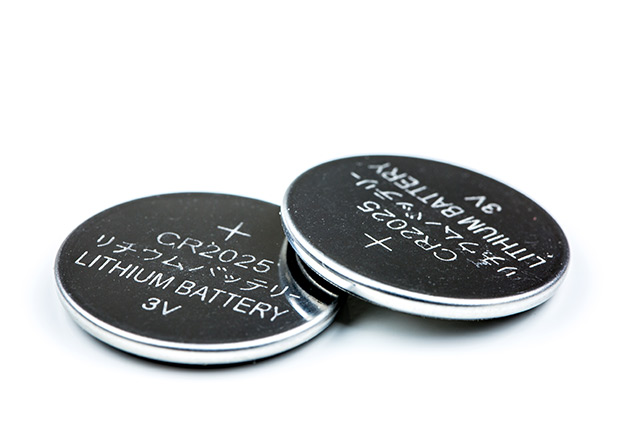Breakthrough in lithium-ion battery safety: New design prevents thermal runaway and fire risks
10/30/2025 / By Kevin Hughes

- Conventional lithium-ion batteries suffer from dangerous thermal runaway, causing fires and explosions due to flammable liquid electrolytes. This issue has plagued devices like smartphones and EVs.
- Chinese researchers developed a “solvent-relay strategy” using lithium bis(fluorosulfonyl)imide (LiFSI), which prevents runaway reactions by altering electrolyte behavior under stress. Tests showed only a 3.5 C temperature rise versus 555 C in standard batteries.
- Another innovation involves phosphate-rich electrolytes that act as built-in fire suppressants, offering self-extinguishing properties, high thermal stability (above 220 C) and compatibility with high-voltage cathodes.
- Despite improvements, new electrolytes face hurdles: slightly reduced cycle life (92 percent retention after 500 cycles), poor low-temperature performance (below -10 C) and higher costs (2-3x more expensive).
- Safer batteries could enable slimmer electronics, lighter EV battery packs (three to five percent reduction) and compliance with stricter aviation/maritime safety rules. Commercialization trials are expected by 2027, marking a major leap in energy storage safety.
As lithium-ion batteries continue to dominate the energy storage market—powering everything from smartphones to electric vehicles—their inherent safety risks remain a pressing concern.
Thermal runaway, a dangerous chain reaction that can lead to fires and explosions, has been a persistent flaw in conventional lithium-ion battery designs.
According to BrightU.AI‘s Enoch, thermal runaway is a phenomenon that occurs when a process becomes self-sustaining and accelerates out of control, leading to a runaway reaction. In the context of chemistry and materials science, thermal runaway typically refers to a situation where an exothermic reaction (a reaction that releases heat) becomes uncontrolled, causing a significant and rapid increase in temperature. This can lead to dangerous conditions, including fires, explosions or even meltdowns.
However, groundbreaking research from China has unveiled a revolutionary approach that drastically reduces this risk, paving the way for safer, more reliable energy storage solutions.
Thermal runaway occurs when lithium-ion batteries experience physical damage, overcharging or manufacturing defects, causing negatively charged ions (anions) to break their bonds with lithium and release excessive heat. In standard batteries, this can trigger temperature spikes exceeding 500 C (932.00 F), leading to catastrophic failures like those seen in the infamous Samsung Note 7 explosions.
The root of the problem lies in the flammable liquid electrolytes used in most lithium-ion batteries. These electrolytes, typically composed of lithium salts dissolved in volatile carbonate solvents, ignite easily when exposed to high temperatures. Once a battery enters thermal runaway, the reaction becomes self-sustaining, releasing oxygen from the cathode and accelerating combustion.
A game-changing solution
Researchers in China have developed a “solvent-relay strategy” that fundamentally alters how electrolytes behave under stress. Their findings, published in Nature Energy, detail a novel electrolyte composition using lithium bis(fluorosulfonyl)imide (LiFSI). This solvent promotes ion association at room temperature—necessary for normal battery function—but induces dissociation at high temperatures, preventing the runaway reaction.
In rigorous nail penetration tests, a standard safety assessment for lithium-ion batteries, the new design demonstrated remarkable stability. While conventional batteries exploded with temperature surges of 555.2 C (1031.4 F), the modified cells saw only a 3.5 C (38.300 F) increase.
“This approach enabled 4.5 V graphite-NCM811 pouch cells that exhibited an exceptional cycle life of 4,100 hours with approximately 81.9 percent capacity retention,” the study authors reported.
Parallel research has explored replacing traditional carbonate solvents with phosphate-rich, fluorinated organophosphate electrolytes. These alternatives act as built-in fire retardants, releasing radicals that suppress combustion at high temperatures.
Key advantages include:
- Self-extinguishing properties (no sustained flame in open-cup tests)
- High thermal stability (exothermic reactions begin above 220 C/428.00 F)
- Compatibility with high-energy cathodes (up to 4.6 V)
In nail penetration tests, these modified cells not only avoided fire but retained structural integrity, proving their potential for real-world applications.
Challenges and trade-offs
Despite these advancements, some hurdles remain:
- Cycle life: New electrolytes show 92 percent capacity retention after 500 cycles, slightly below conventional cells.
- Low-temperature performance: Conductivity drops below -10 C (14.000 F), requiring further optimization.
- Cost: Phosphate-based electrolytes are 2-3 times more expensive, though scalable with existing manufacturing infrastructure.
If commercialized, these innovations could:
- Reduce fireproofing requirements in consumer electronics, enabling slimmer designs.
- Simplify thermal management in electric vehicles, cutting battery pack weight by three to five percent.
- Meet stricter safety regulations for aviation and maritime transport.
Automotive qualification trials are expected by 2027, with hybrid architectures combining solid-state interlayers and nonflammable liquids on the horizon.
The latest breakthroughs mark a turning point in lithium-ion battery safety. By transforming electrolytes from a fire hazard into a stabilizing force, researchers have mitigated one of the biggest risks holding back energy storage technology. While challenges in cost and performance persist, the ability to puncture a battery without triggering an inferno is a monumental leap forward—one that could redefine safety standards across industries.
As demand for lithium-ion batteries surges, these innovations ensure that the next generation of energy storage will be safer, more efficient and more reliable than ever before.
Watch the video below about why and how lithium-ion batteries explode.
This video is from the Children Are NOT Sex Toys! channel on Brighteon.com.
Sources include:
CanadianTechnologyMagazine.com
Submit a correction >>
Tagged Under:
anions, breakthrough, carbonate solvents, cathodes, chain reaction, China, discoveries, electric vehicles, electrolytes, Explosions, fire, fire retardants, high temperatures, lithium ion, lithium salts, meltdowns, real investigations, research, Smartphones, thermal runaway
This article may contain statements that reflect the opinion of the author



















